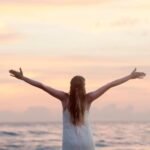What are Blue Zones?
The Blue Zones are considered some geographical areas of the world where people live the longest in comparison to other areas. The term is nonscientific and used only as an identity for places with higher life expectancy. Dan Buettner is an author, National Geographic Fellow, and explorer who coined this term. The name was simply given because he and his team were marking these places on the map with blue marks, then named the overall zones as ‘Blue Zones.’
Japan’s life expectancy is, on average, 85 years, where females have 88 years and males 82 years on average. If moved from the mainland, the numbers get higher.
History of Blue Zones
During an exploration of Okinawa, Japan, in 2000, Dan Buettner found out the secret to their longevity. Then he started to explore other such areas where people live the longest with great vitality with his team of scientists. That’s how, from an exploratory project in 2004, Blue Zones were discovered by them.
Dan Buettner worked for over a decade on this. His works are documented in books, and recently, a Netflix documentary was released. His books on Blue Zones are:
- The Blue Zones
- The Blue Zones Solution
- The Blue Zones Challenge
- The Blue Zones American Kitchen
- Blue Zones Secrets
- Blue Zones of Happiness
- Thrive
Five Places with the Centenarians
It first started with Okinawa, Japan, then other places in the world were found where centenarians live. The top five places are: Icaria, Greece; Okinawa, Japan; Loma Linda, United States; Sardinia, Italy; and Nicoya Peninsula, Costa Rica.
Okinawa, Japan
Okinawa is composed of a chain of islands known as the Ryukyu Islands. With over 150 islands, it stretches southwest from the Japanese mainland towards Taiwan. The place is known for its unique tradition, influenced by Japan and China, as well as its own distinct Ryukyuan heritage.
Okinawans are known for their Ikigai practice in lifestyle. They are the longest-lived because of their concept of Moai—a strong community bond and a close circle of five people. They don’t have any concept of retirement because they have built work and movement into their daily life in a way that doesn’t feel overbearing.
Not only Ikigai, but most of the Japanese wellness concepts also come from Okinawa, such as Shukanka and Yuimaru. Their culture, enriched with wellness, is influencing the world to adopt these approaches as well.
Icaria, Greece
Icaria (also spelled Ikaria) is a Greek island located in the Aegean Sea. It is part of the North Aegean region of Greece and lies southwest of the island of Samos and southeast of the island of Mykonos. The island is named after Icarus from Greek mythology, who is said to have famously flown too close to the sun.
Icaria is known for thermal springs, traditional villages, rugged terrain, and beautiful landscapes. The people here are able to live the longest because they have a slow pace of life with strong community bonding, which is called ‘saga-saga.’ Their plant-based diet, working in their garden, napping in the daytime, and moving mindlessly without extra effort are the secrets behind their longevity.
Ikarians are almost free from dementia, and one in three reaches their 90s. Because of their beautiful geographic environment, water sports, hiking, and cycling are common practices that make their life fun-filled.
Loma Linda, USA
Loma Linda is a city located in San Bernardino County, California, United States. Loma Linda has a reputation for health and wellness as well as being a Blue Zone area. Its status is also due to the practices of its large Seventh-day Adventist population.
They emphasize unprocessed food, legumes, limited meat, and hydration. The church members view health as central to their faith, which has a positive impact on the area. They take a weekly break from daily work, focusing only on their loved ones, God, and nature. This practice relieves their stress. Their practices are simple and similar to other Blue Zone areas.
Sardinia, Italy
Sardinia is an island located in the Mediterranean Sea, west of the Italian peninsula. It is the second-largest island in the Mediterranean after Sicily.
Culturally, they are isolated and have a very traditional and healthy approach toward life. Even though other parts of Italy don’t correlate with this area, the Sardinians have integrated a plant-based diet into their life and believe in traditional approaches like hunting, collecting their food, and working in a community.
Moderate wine drinking, regular movement, and spending quality time with friends and family have kept them alive longer than in other parts of Italy. Goat milk is famous among Sardinians, so for lactose-intolerant individuals, this problem is also solved.
Nicoya Peninsula, Costa Rica
Nicoya is a peninsula located in the northwestern part of Costa Rica. Though this area isn’t that far from the U.S., it is ahead in longevity.
Their ‘Plan de Vida’ or ‘purpose of life’ works like a boost for the elderly to live with a strong sense of worth. Calorie control, a family-oriented mindset, and a simple lifestyle are common factors among the centenarians there.
Power 9
There are different customs, ancestral heritage, and traditions in all five areas. While exploring all of those, some common approaches and lifestyles were found as factors for prolonged life expectancy. Summarizing all the factors, there are nine key things that lead to longevity and healthy living.
One or some of these don’t improve life standards alone; rather, all of these together create a lifestyle that promotes longevity:
Move naturally
Right outlook
- Purpose
- Downshift
Eat wisely
- 80% rule
- Plant-based diet
- Moderate consumption of wine
Connect
- Belong
- Loved ones first
- Positive pack
Physical movement
The modern world’s view of exercise and keeping the body healthy is sometimes overbearing and not sustainable in the long run. But, while exploring the Blue Zones, explorers have found the simplest physical activities among people living there.
When we hear of physical movement, we think of running marathons, joining gyms, lifting heavy weights, squats, and other hardcore exercises. Industrialized cities and easy transportation have reduced our daily physical activities. But the people of Blue Zones don’t follow such routines. They just do their daily activities like climbing stairs, gardening, going to others’ houses by walking, cycling, etc. These simple daily life activities keep their bodies in constant motion without any extra routine or motivation.
Obesity, heart disease, stroke, diabetes, and other lifelong diseases are piling up medical costs. Personal satisfaction, positivity, and motivation for movement are fading day by day. Why are these problems rising at an alarming rate? Because of our convenience-driven lifestyle. Physical movement is vanishing with each development. Just think about the people living in Okinawa or other areas. They don’t need extra motivation to practice hardcore exercise every day. Rather, they have integrated movement seamlessly into their daily work.
Purpose of life
Whether it’s Okinawans’ ikigai or Nicoyans’ plan de vida, whatever name we give it, every person needs a purpose for living. We often hear from people with depression that they don’t find the motivation to wake up in the morning because they struggle to find a purpose. Every day, when we live, we need an answer to: “Why do I wake up in the morning?”
A sense of purpose keeps the mind and body in harmony and agreement. When you have something to look forward to daily, the motivation to go through stress and struggle comes as a byproduct. Without that, you might think, Why should I go through all this? Is all this worth it?
Blue Zone centenarians have this common characteristic. They have a strong sense of purpose in life. As a result, they have hope, a positive outlook on life, and motivation to progress. Having a purpose can help people live up to seven years longer than those who don’t have one.
Downshift
Stress is something we can’t get rid of, but we also can’t lose control over it. Coping mechanisms are the only way to regain control of our lives. Stress might seem like a simple daily phenomenon, but it contributes to dangerous outcomes if not handled properly—chronic inflammation, deterioration in mental health, aging, heart disease, stroke, early progression of dementia, and a weakened immune system are all linked to stress.
There are many ways to manage it. Healthier approaches to stress management are a common factor among Blue Zone residents. For example, Okinawans take moments to remember their ancestors, Adventists in Loma Linda pray or meditate to downshift, and Sardinians enjoy happy hours with camaraderie.
Some effective ways to manage stress include:
- Slowing down sometimes when stress is overwhelming
- Walking, running, or spending time with companions to relieve stress
- Meditation, prayer, and breathing exercises to calm the nerves
- Proper, regular sleep
The 80% rule of eating
Hara Hachi Bu in Okinawa is a famous way of eating, a Confucian practice. Smaller portion sizes and slower eating prevent overeating, obesity, and heart disease. Sometimes, the process of eating matters more than controlling the diet itself. Since our brain needs 20 minutes to process the signal of a full stomach, slow eating helps us realize how much we are consuming.
Eat until you’re 80% full. But how does one know how much 80% is? There’s no way to quantify it other than by feeling. Stop eating when you think your stomach is satisfied. When you eat more than that, discomfort in movement is the outcome.
Plant-based diet
Plant-based diets are high in antioxidants, fiber, and healthy fats. Though the five Blue Zones have different food traditions and cultures, plants are at the center of their diet.
- Beans, black soy, and lentils are staples in Blue Zones
- Vegetables, fruits, whole grains, and nuts
- Meat is eaten only five times a month (not exact, though)
- Moderate consumption of fish, three times weekly
- Prioritizing goat and sheep’s milk over cow’s milk due to lactose intolerance
- Controlled intake of sugar
- Drinking enough water over soft drinks, and consuming tea and coffee within tolerance levels
Wine at 5
Moderate alcohol consumption is good for heart health and stress reduction. Though this is an exception for Loma Linda residents, who abstain from alcohol due to their faith, red wine has been proven beneficial for health—especially Sardinians’ Cannonau wine, which is rich in antioxidants.
A daily practice of 1-2 glasses of wine is common among Blue Zone residents. But that doesn’t mean saving all those glasses for one day per week. The key is daily moderate drinking.
Belonging to somewhere
Human beings can’t live alone without a community. A sense of belonging, whether through a community or religious faith, is absolutely necessary to rely on something. Religious faith gives people patience and strength, and community provides the same benefits. A strong community offers emotional support and reduces stress.
Adventists in Loma Linda have faith in their religion, and Okinawans participate in moais—social support groups.
Family-first principle
Success remains incomplete without family and friends’ connections. Prioritizing family and close relationships is centenarians’ number one principle in life. At the time of death, people don’t regret not gaining power or wealth; the only regret is not giving enough time to family or neglecting close bonds.
Fostering family relationships is common among all long-lived people in Blue Zones. They invest time in children, spouses, and elderly family members. Strong family ties provide emotional support unlike anything else.
Related: What is Slow-living?
Close social circles
Finding a healthy, like-minded social circle is a rare fortune. The right circle will teach you how to live life, support you in bad times, and encourage you to move forward. Okinawans have moais—lifelong close circles that provide emotional and financial support. It is said that having a close circle of five prolongs life expectancy more than being lonely.
Criticism of the Blue Zones
While the popularity of Blue Zones has peaked through news articles, books, and Netflix documentaries, strong criticism has also emerged. Some accusations of data errors, fraud, marketing-driven motives, and a lack of reliable records have been made against explorer Dan Buettner. Although Blue Zones mainly focus on five areas, other places also have centenarians. Some argue that failing to include all of them results in unreliable data and overall weak statistics.




